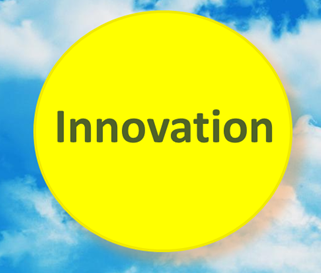When I was Chief Research Officer at the ARF, on July 15, 2008, we began an initiative called research transformation. There were two big elements that came out of the first meeting (Procter, Unilever, and General Mills were all there). First, we must reinvent the innovation process so that more effort goes against creating powerful innovation ideas from repeatable processes rather than ideas coming from the spray and pray approach. The second idea was the importance of listening to social media conversations so we can hear the unexpected, rather than have a dialogue with consumers that is restricted to marketing research questionnaire vocabulary.
With 80% of new products failing and with most of the breakthroughs according to the IRI pacesetters report actually being line extensions, we have to admit it. The CPG approach to innovation is broken and must be reinvented.
There are five principles I propose, around which we can reinvent the innovation process itself:
- It is more important to segment moments than consumers. What is the landscape of consumption situations and what drives choice in each respective moment? To do this, you must have a discovery process. Social media and immersive research are great. With social media, remember that people are talking about their lives in an unscripted way. Social media is not only rich for insight extraction, it is behavior itself.
- Go beyond discovery to quantification. So many in the innovation business stay with qualitative research to springboard into new ideas. Who knows the size of the prize from qualitative alone? You must have a valid way of quantifying this. Cluster moments into segments then profile consumers, not the other way around (which is traditional). Develop behavior markets rather than product category defined markets. This will also give you much more powerful media placement as moments will reveal themselves in digital life, especially via smart phones.
- Uncover the cues that signal a product would be exactly what someone is looking for in a given situation. More than half of brand purchase decisions are made at point of purchase, and the leading source of awareness for a new product is in-store exposure. Isn’t that a sign that the behavioral economists and other choice scientists are right about the impact of cues on instantaneous choice behavior? Shouldn’t marketing make it a top priority to crack the code on cues?
- How do we test new product ideas with the same specificity with which they were created? If we are looking to address the choices people make in a given behavioral situation, why ask purchase intent which is not choice based and why ask it of everyone with a mouth? Get specific to the behavior market and study the choices people make when in those situations. Understand the drivers of choice specific to those situations.
- Evolve the measure of uniqueness into a measure of disruption. What a marketer really wants to do is to disrupt the habitual behavior that people have so their new product gets noticed and considered. Seeing it this way, the traditional uniqueness question in concept research is incomplete and inadequate.
I have been working with an inventive Oregon-based firm called InsightsNow to create a very contemporary approach to innovation that follows these principles. The process is called BehaviorLens ™. It uncovers innovation opportunities and then tests them in ways that are aligned to how those ideas were created in the first place. InsightsNow conducted a study at their own expense to understand the meal replacement market and there were some very big a-has from that research. For example, it is clear that lines are blurring between what is a meal occasion and what is a snack occasion. It was also interesting to see products such as pizza being defined by some consumers as meal replacement products. From this research we identified seven behavior markets where the drivers of choice were similar within market and distinct across markets. Most remarkably, when we extracted just meal replacement products, we found that they constituted a small portion of the true potential but also, that our estimates of market size tied out almost perfectly to reported sales for such products, so this is really the first discovery process that is validated to get at size of prize. (Study is available upon request if you send me an e-mail or by visiting their web site).
Don’t settle for tweaking traditional innovation research methods. This is a different era of self-directed consumers who can pull any information they want digitally and who are instant sense-makers as they shop. New era, new solutions.


Hi Joel,
A thought provoking post.
I agree with your point about segmenting moments not customers. I find need states rather than consumer segments a better prompt for innovation.
I also agree with your point around disruption. Loyalty is a characteristic of all human decision making – it’s quicker not to think!
Byron Sharp’s “How Brands Grow” presents a meta-analysis of how marketing affects behaviour, and covers these points in detail. I have found it really useful in guiding my thinking. I have attempted a summary here:
http://cmym.wordpress.com/2011/05/19/byron-sharp%E2%80%99s-world-of-cognitive-misers-brains-and-behaviour-part-2/
Cheers,
Simon.
Hi Joel,
Thanks very interesting post. I have two questions. In your first principle, you pay attention on social media. But as we know on-line behaviour is different from real buyer behaviour. So how can we select and use the information gathered from social media and apply it for our business purpose? What do you think about Jay Abraham view on optimisation?
http://up-down-hunter.blogspot.com/2012/01/three-ways-to-grow-business.html